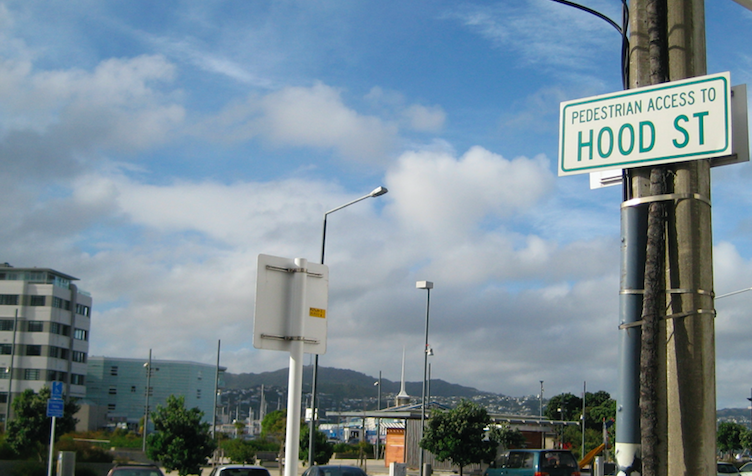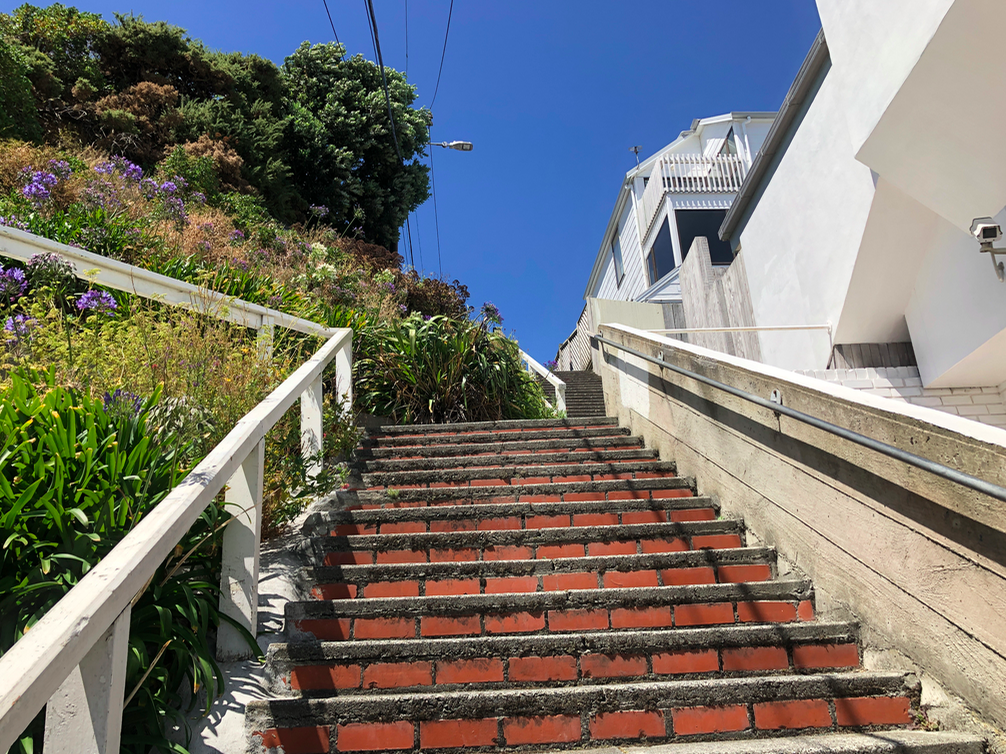FIND THESES STEPS – Beside No. 60 Oriental Parade or from the top, at 69 Roxburgh Street.

The view from Oriental Parade.
Oriental Parade takes its name from one of the Wellington Company ships, which arrived in 1840.
The marker on Oriental Parade, opposite Waitangi Park, with Herd Street apartments to the left, and the spire of the Clyde Quay Wharf in the lower middle.
 As it was in 1951. (The source for this photo is unknown to me – it is off the internet.)
As it was in 1951. (The source for this photo is unknown to me – it is off the internet.)

Hood Street is near Waitangi Park, Clyde Quay Wharf, and the Embassy Cinema, the site, in 1842, of a windmill.


A call to unite – posted along the steps.

The view from the top looking toward Waitangi Park. The large building on the right is the site of the former Post and Telegraph Building, built in 1939, where – I have been told – toll operator, Naida Glavish, the ‘kia ora lady’ – began using the greeting only to be told by supervisors to stop. She won, and she is now a Dame Companion of New Zealand.
Ms Irvine-Smith has this note for Hood Street:
‘…Hood Street, a modern street at the water-front, named for a modern triumph of shipbuilding, H.M.S. “Hood,” fated to be a war casualty in the late war.’
The battle cruiser was built in 1918 and was named for Rear Admiral Sir Horace Hood, who had been killed in a sea battle in 1916. The ship was sunk in 1941 by the German warship Bismarck, with only three surviving of 1,418 seamen. According to the BBC (‘Remembering HMS Hood, the mighty warship launched in Clydebank’, 22 August 2018, BBC News) the Hood was known as the most powerful warship in the world for 20 years, and its sinking in the battle of the Denmark Strait in the North Atlantic had a devastating effect on the moral of the British public.
The steps and street were previously called McKenzie Street and the visit in 1924 of three British warships, including the Hood, prompted the name change.
